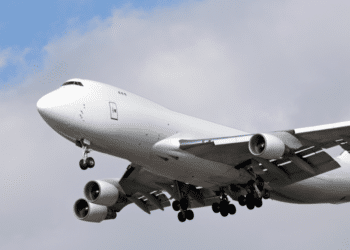Destination Unknown: What the future may hold for freighters
Sensitivity analyses
In order to add some interactivity into its forecasting model, ACMG has enhanced this year’s freighter report, by providing a “Freighter Forecast Analysis Tool.” This tool, in interactive spreadsheet form, allows users to input their own combinations of assumptions into the freighter forecast, and analyze the resulting fleets by size category in five-year increments over the 20-year forecast horizon. Users can vary simultaneously annual air cargo traffic demand growth, freighter aircraft productivity shifts, and changes in freighter-to-belly ratio.
To illustrate the affects of the above sensitivity factors, ACMG provides in Figures 2 and 3 the results of sensitivity analyses that address variations from the baseline assumptions of growth rate and freighter productivity.

Regarding productivity, ACMG expects that future freighter models will exhibit enhanced capability over the forecast period, due to increasing freighter size and incremental increases in freighter load factor (percent of space used per flight) and utilization rate (hours flown). “Increasing productivity means that, on average, each freighter in the future fleet can do more work than a freighter in the current fleet,” the report stated. “Our baseline scenario uses a productivity enhancement factor of 1.5 percent, per year… On a compound basis over 20 years, this factor reduces the number of freighters needed by 35 percent” compared to the quantity needed if there was no productivity improvement.

Finally, the analysis tool predicts how changes in the freighter:belly ratio will cause shifts in future freighter demand.
Today, about one-half of air cargo is carried in freighters; the other half moves in the belly compartments of passenger aircraft. Increasing quantities of widebody passenger aircraft with large belly capacity suggests a shift away from freighters is taking place. Using the analysis tool, increasing the belly share by five percentage points over the 20-year period results in roughly a 10 percent reduction in the size of the 2034 freighter fleet. This data point, along with the information from Figures 2 and 3, shows that even a relatively small change in input assumptions can have a large impact on the size of the predicted freighter fleet twenty years from now.
Freighters added over the next 20 years will be a mix of newly produced units and aircraft converted to freighter configuration after serving in a passenger-carrying role, ACMG added. About two-thirds of the units in the existing freighter fleet are converted aircraft, and that relationship is expected to continue in the future. Conversions are especially popular in the small-capacity freighter market, while the use of new-build freighters is common in the large freighter market.




